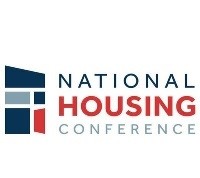Immigrants’ Strong Desire for Homeownership Will Shape U.S. Housing Markets, Says New ULI Report, ‘Home in America: Immigrants and Housing Demand’
Housing Choices in San Francisco, Houston, Buffalo, Minneapolis, Charlotte Suggest Broader Trend
WASHINGTON (April 12, 2017) – (RealEstateRama) — The housing and neighborhood location choices of immigrants will have a significant impact on urban growth in the U.S. for decades to come, particularly as more foreign-born residents seek to own homes in suburban communities, according to new research from the Urban Land Institute’s Terwilliger Center for Housing. Homebuilders and developers who can deliver the housing options immigrants want and need stand to benefit in the years to come.

Home in America: Immigrants and Housing Demand examines the influence of immigrants in shaping urban growth patterns, particularly those who have entered the U.S. since the Great Recession (since 2010, the number of immigrants from Asia has surpassed those from Latin America). “Immigrants have helped stabilize and strengthen the housing market throughout the recovery,” said Terwilliger Center Executive Director Stockton Williams. “Immigrants’ housing purchasing power and preferences are significant economic assets for metropolitan regions across the country. This suggests the potential for much more growth attributable to foreign-born residents in the years ahead,” he added.
Among the key findings from the report:
- Without growth of the foreign-population, regions with strong housing markets such as San Francisco would not have recovered as quickly following the recession; and markets that continue to struggle in the recession’s aftermath such as Buffalo would have experienced even weaker growth.
- Immigrants have strong aspirations for single-family homeownership, and homeownership rates for immigrants rise with their length of time in the U.S. This suggests that immigrants will be a key driver for owner-occupied housing for years to come.
- Immigrants seeking to own homes as well as those renting homes are increasingly drawn to the suburbs in search of employment opportunities, lower-cost housing and a higher quality of life. Suburbs are home to high-income, high-skilled immigrants as well as lower-income, lesser-skilled immigrants.
- While immigrants represent a key source of demand for new housing, a substantial share of immigrant housing demand will be met through purchases of existing homes. Sellers of these homes – many of whom will be baby boomers seeking to downsize – will create a strong market for smaller units.
- Urban areas experiencing significant immigrant population growth should explore how to best accommodate immigrants and leverage the positive effect they have on the housing industry and economy. Investments in housing, retail, recreational and cultural amenities, as well as social assistance and education programs can help forge a strong connection between immigrants, neighborhoods, and the greater community.
- Just as housing demand by immigrants was a key factor in tempering the worst impacts of the housing collapse, this demand is now helping to build housing market momentum. Demand for homeownership and for single-family housing, as well as the continued growth of both urban and suburban communities throughout the country, will depend on the trajectory of U.S. immigration policy.
The findings in Home in America are drawn in part from analyses of the housing and neighborhood preferences of immigrants in five metropolitan areas that represent different types of immigrant gateways:
- San Francisco – a major continuous gateway, with a large and sustained immigrant population throughout the 20th century and into the 21st century (other examples are New York City, Chicago, Boston)
- Houston – a post-World War II gateway that has attracted large numbers of immigrants since the mid-20th century (other examples: Los Angeles, Miami, Washington, D.C.)
- Buffalo — a former gateway that was a major entry point in the early-to-mid-20th century due to its strong manufacturing economy (other examples: Cleveland, Detroit, St. Louis)
- Minneapolis-St. Paul — a re-emerging gateway marked by a renewal of immigrants at the end of the 20th century into the 21st century (other examples: Baltimore, Denver, Seattle); and
- Charlotte – a major emerging gateway that started experiencing a wave of immigrants at the beginning of the 21st century (other examples: Atlanta, Las Vegas, Orlando)
Home in America notes that foreign-born population growth in most of gateways outpaced overall population growth between 2006 and 2014 (the time period from just prior to the housing market collapse through the housing rally). Emerging gateways, which experienced strong overall population growth, were the only exception. The report also looks at the neighborhood choices of immigrants within the five metro areas, focusing on five categories of suburbs (typologies developed for ULI by RCLCO):
- Economically challenged suburb – characterized by lower home values and little population growth
- Stable middle-income suburb – having a wide range of home values, usually more centrally located
- Established high-end suburb – having high home values, established development patterns, often near employment centers
- Greenfield lifestyle suburb – close to the edge of metro areas, developed mainly in the past 15 years, typically adjacent to established high-end suburbs; and
- Greenfield value suburb — close to the edge of metro areas, often adjacent to stable or economically challenged suburbs, more affordable than greenfield lifestyle suburbs.
The differences in where immigrants are locating in the five cities is an indicator of how they could influence future growth within these markets, the report says. In San Francisco, immigrants are spread across nearly all types of suburban communities, with the highest percentage, 35 percent, living in economically challenged neighborhoods. In Houston, the largest share of immigrants, 39 percent, live in stable middle-income suburbs, followed by 29 percent in economically challenged suburbs. In Buffalo, 30 percent live in established high-end suburbs (a greater share than the native-born population) and 27 percent live in urban neighborhoods. In Minneapolis, the highest percentage, 32 percent, live in economically challenged suburbs, followed by 27 percent in stable middle-income suburbs. In Charlotte, 27 percent live in economically challenged suburbs. Nineteen percent live in stable-income suburbs and an additional 19 percent live in established high-end suburbs.
Home in America points out that the presence of immigrants could help boost revitalization in economically challenged suburbs; sustain the success of stable middle-income suburbs; and contribute to the growth and diversity of established high-end suburbs.
“If recent shifts in immigration flows continue, an increase in higher-income immigrants – including rising numbers from China and India – could accelerate the demand for homeownership among the foreign-born population,” the report says. “Without sustained immigration, the housing market could weaken and in many markets the impact could be dramatic.”
About the Urban Land Institute
The Urban Land Institute is a nonprofit education and research institute supported by its members. Its mission is to provide leadership in the responsible use of land and in creating and sustaining thriving communities worldwide. Established in 1936, the institute has more than 40,000 members worldwide representing all aspects of land use and development disciplines. For more information, please visit uli.org or follow us on Twitter, Facebook, LinkedIn, and Instagram.
Contact Trish Riggs at 202-624-7086





